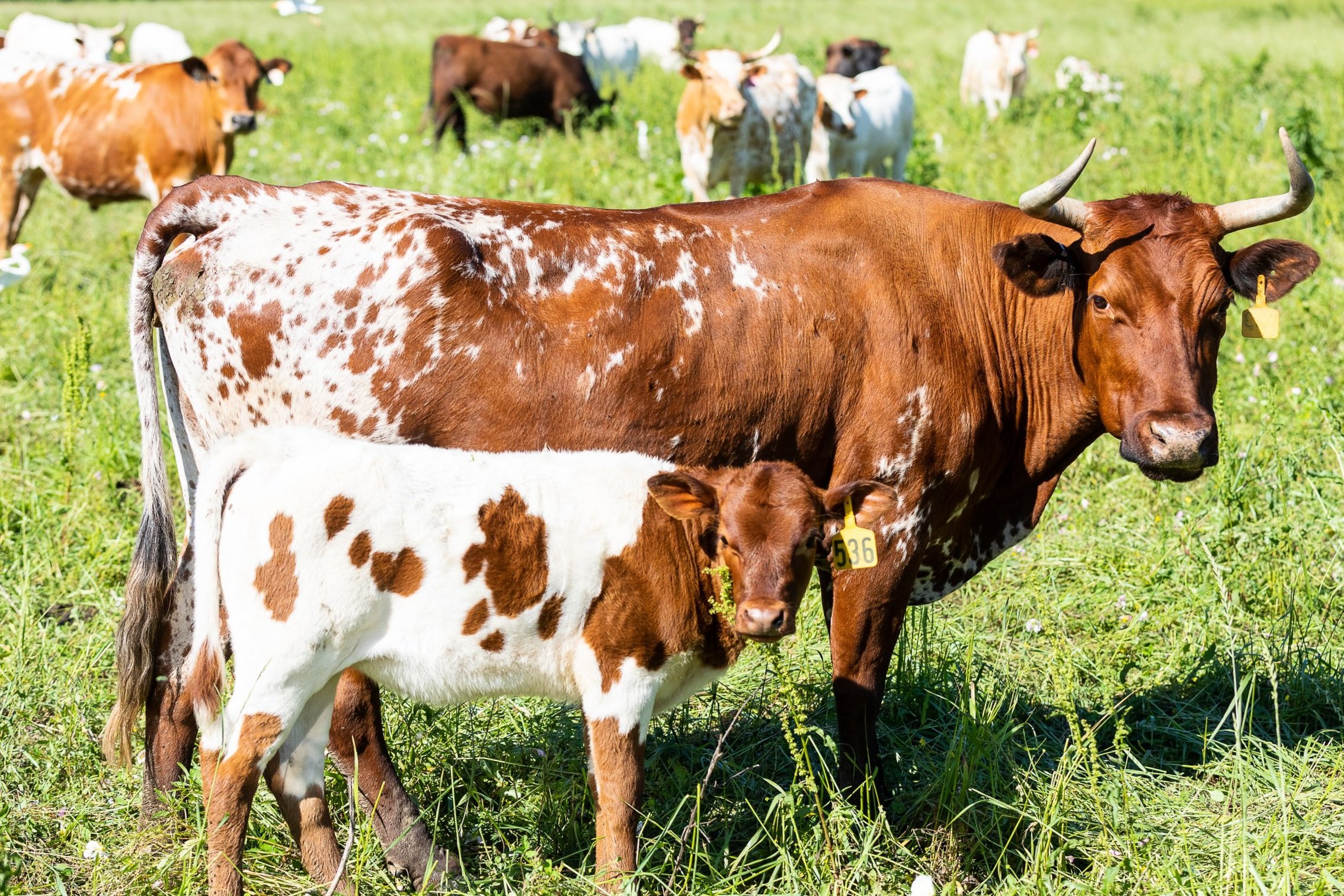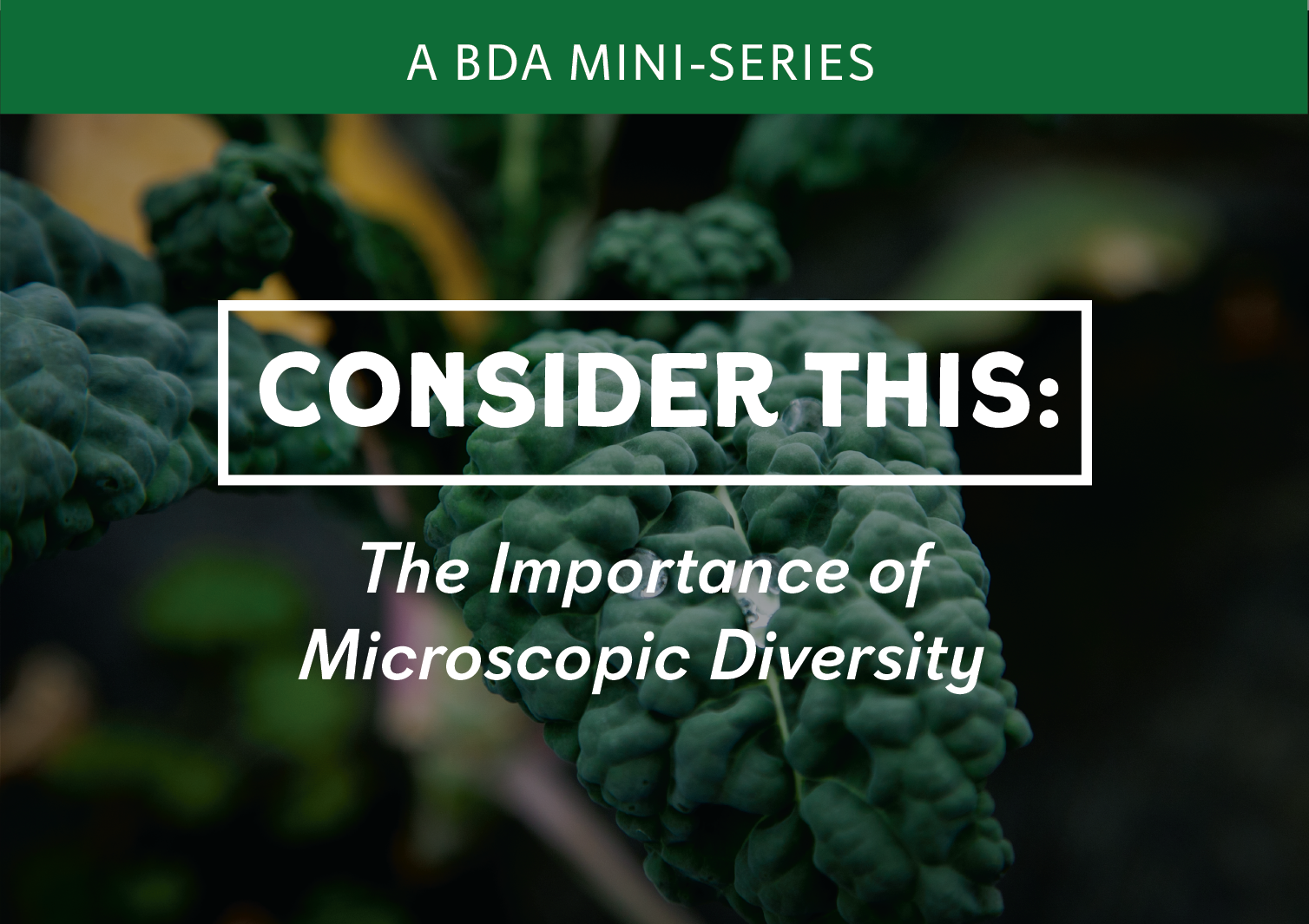CONSIDER THIS: The Importance of Microscopic Biodiversity - Mini-series #2
The Importance of Microscopic Biodiversity
Allen R Williams, Ph.D.
Microscopic biodiversity is an essential ingredient for optimal human health. Without it, we are at risk for increased inflammation and onset of disease and disorders. The foods that we eat all contain tens of millions of bacteria and other microorganisms. The question is not whether we are consuming millions of microbes when we eat our foods, but the biodiversity of those microbes and their benefit to our health.
The research evidence is now showing that foods grown or raised under conventional agricultural methods contain poor microbial biodiversity and can create inflammation in the body. Why is this the case? Because conventional agricultural practices significantly reduce the microbial biodiversity in the soil. That, in turn, reduces the biodiversity in the foods that are produced from that soil.
The microbes in our gut play a major role in our overall health status. They determine how well we are nourished (it is the microbes in our gut that actually digest foods we eat and make their nutrients available for uptake into our bloodstream), whether we will be prone to obesity, and proper function of our immune, nervous and vascular systems. There are 100 times more bacteria in our gut than anywhere else on and in our bodies.
Studies have revealed that healthy people who are 90 years of age or older tend to have far greater microbial biodiversity in their gut compared to the average adult.
Since this is the case, what are the primary factors that enhance the microbial biodiversity in our gut?
More contact with the natural environment. Getting outdoors more and playing in the soil (what many call dirt) is actually good for us. The incessant use of sanitizers has significantly harmed the human microbiome on and in our bodies. Getting back out into nature and direct contact with that nature boosts our immune system and helps protect us against allergies and inflammatory diseases. In other words, getting dirty once in a while is beneficial to our health.
Eating foods produced from regeneratively managed soils. Regenerative practices enhance the soil microbiome and thus the plants grown in those soils and the proteins produced from animals eating those plants. We know that animals eating plants produced in microbially-rich soils produce far healthier meat, milk and eggs.
Eating a wide variety of foods produced from microbially-rich soils. A low diversity diet limits the microbial diversity in our gut and lowers our ability to ward off inflammation and subsequent disease.
Start our children off right by eating a diverse and microbially-rich diet while the child is still in the womb and then expose that child to whole, regeneratively produced foods early in life. This kick starts their immune system and greatly enhances their lifetime health.
So, what are the primary factors that lower our gut microbial biodiversity and increase incidence of inflammation and disease?
Eating foods produced from conventionally managed soils. Low biodiversity in the soil leads directly to low biodiversity in your food.
Eating highly processed foods. This includes the highly processed plant-based proteins that are all the rage right now (we will address this in a later blog).
Overuse of sanitizers. These sanitizers not only kill the microbes on our hands but also lower the healthy microbial population in our gut. Be judicious in their use.
Lack of contact with nature and the soil.
The way our foods are grown has a huge impact on the degree of microbial biodiversity contained on and in that food. Foods produced from healthy, microbially-vibrant soils provide far greater microbial diversity than foods produced hydroponically or those grown in greenhouse soils. In other words, a strawberry or tomato grown hydroponically does not even compare to a strawberry or tomato grown in microbially-vibrant soil.
Summary
Globally, people who live in regions where lifespans are the longest eat a diet rich in fresh, local foods produced in microbially-rich soils. Their diets contain far more biodiversity. Studies of the genome show that our intestinal bacteria originate from food bacteria. Therefore, the most common factor in a healthy diet, a healthy gut and a healthy body is biodiversity.
References:
Large-scale genome-wide analysis links lactic acid bacteria from food with the gut microbiome
An Apple a Day: Which Bacteria Do We Eat With Organic and Conventional Apples?
Gut Microbiota and Extreme Longevity
Dirt Is Good: The Advantage of Germs for Your Child's Developing Immune System






